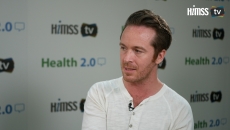Artificial Intelligence
The University of Rochester Medical Center uses analytics with natural language processing to support the organization’s Backstop tracking program at six of its hospitals. It has seen a 29% increase in the recommended examination completion rate.
By asking evocative questions and analyzing facial expressions and voice inflection, AiME (Artificial Intelligence Mental Evaluation) can assess the risk of depression, anxiety and addiction, says Textpert founder and CEO Ray Christian.
Numerous challenges will hinder AI growth in healthcare unless the industry improves, a new scientific report finds.
It’s the beginning of a move to the next generation of AI-based tech, which will take a multi-party colloquial conversation between the clinical team and the patient to create a narrative and structured data, eliminating the keyboard from the surgical room completely, the company said.
In his 16 years with Seoul National University Bundang Hospital, Dr Rong-Min Baek served in key executive roles in both clinical and managerial areas, from department chairman to Chief Medical Officer and Chief Science Officer.
The provider organization has published a study that validates the clinical impact of health IT vendor MedAware’s machine learning-enabled patient safety platform designed to minimize medication-related risks.
Sydney Neuroimaging Analysis Centre (SNAC), an Australian company co-located with the University of Sydney’s Brain and Mind Centre, is building AI tools to automate laborious analysis tasks in their research workflow, such as isolating brain images from head scans and segmenting brain lesions.
Conversa Health has seen growing enthusiasm for healthcare chatbots across both sides of the aisle, says Chief Product Officer Dr. Phil Marshall.
By combining clinical and consumer-derived data, such as from mobile phone apps and wearables, the program will offer tailored advice using machine learning to assess participants who have been to the hospital with chest pain.
Fujitsu will apply AI methods to images of the brain generated by GE’s Revolution CT scanner, and use a specifically-trained algorithm to look for abnormalities.

